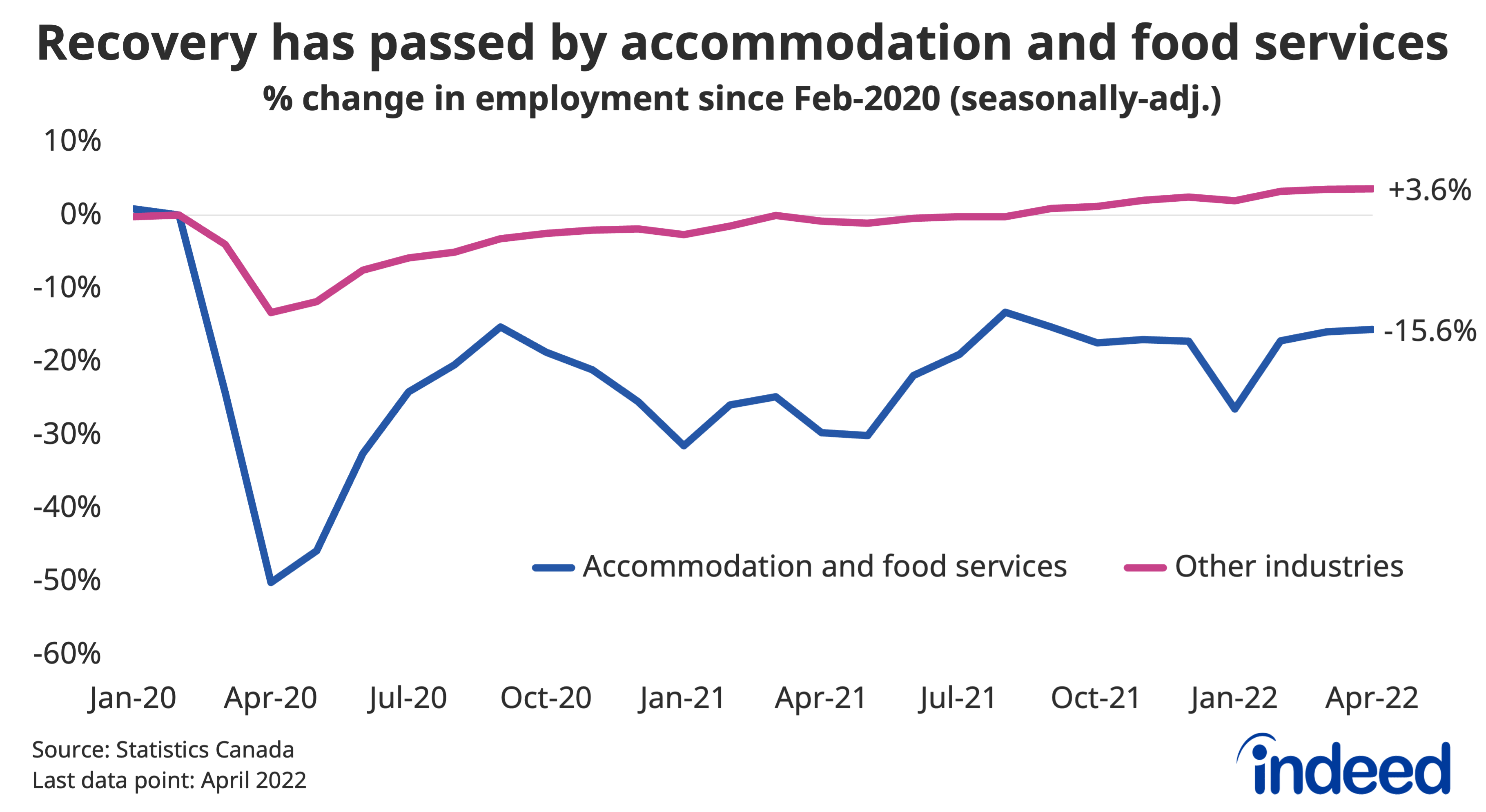The weather might be warming, but Canadian job growth cooled in April. Employment edged up from a month earlier, rising within the typical margin of error. While the headline number was underwhelming at first glance, it follows two particularly strong readings that helped propel the unemployment rate to a new multi-decade low. Slower momentum was inevitable, though the pandemic’s latest wave might have also played a role.
Today’s employment situation is almost unrecognizable from where it stood two years earlier. That said, some of the shifts that started early in the pandemic have persisted. The two industries to add the most jobs in April — professional and technical services, as well as public administration — were the same areas that had already grown fastest from pre-pandemic levels heading into the month.
Meanwhile, employment in accommodation and food services remains down nearly 16%, despite Canadians being increasingly out and about. The durability of this employment shift across industries suggests that businesses will have to up their offers to attract workers back to lower-paying areas of the service sector. Employers might have started taking this to heart, as hourly pay in accommodation and food services picked up in April after several months of slow growth.
Elsewhere, momentum in wage growth remains moderate, particularly given the soaring pace of inflation. Canada’s employment recovery has been impressive in its speed and composition, but the rising cost of living is now steadily eating into paychecks. A key question looking ahead is whether the Bank of Canada’s moves to slow price increases jeopardizes progress made on the employment front.
